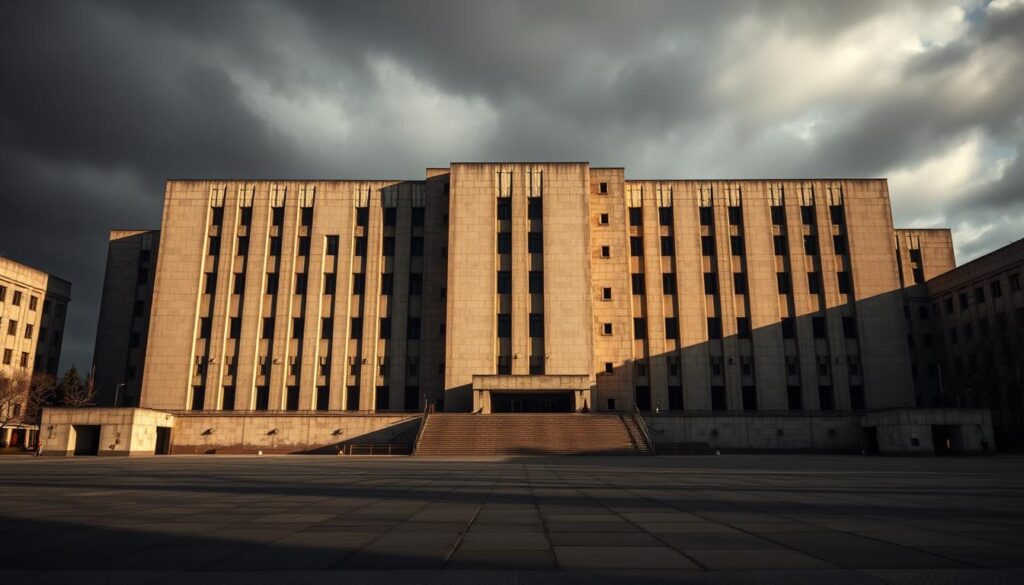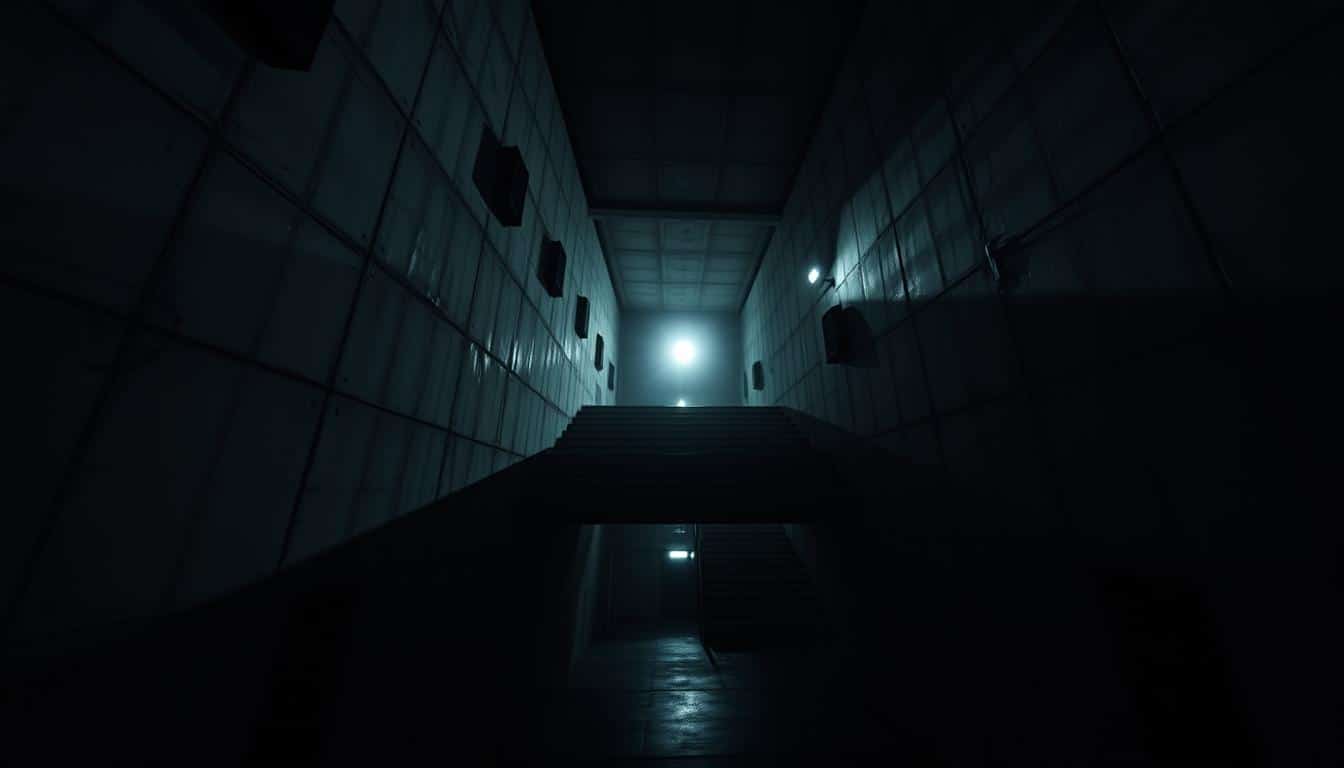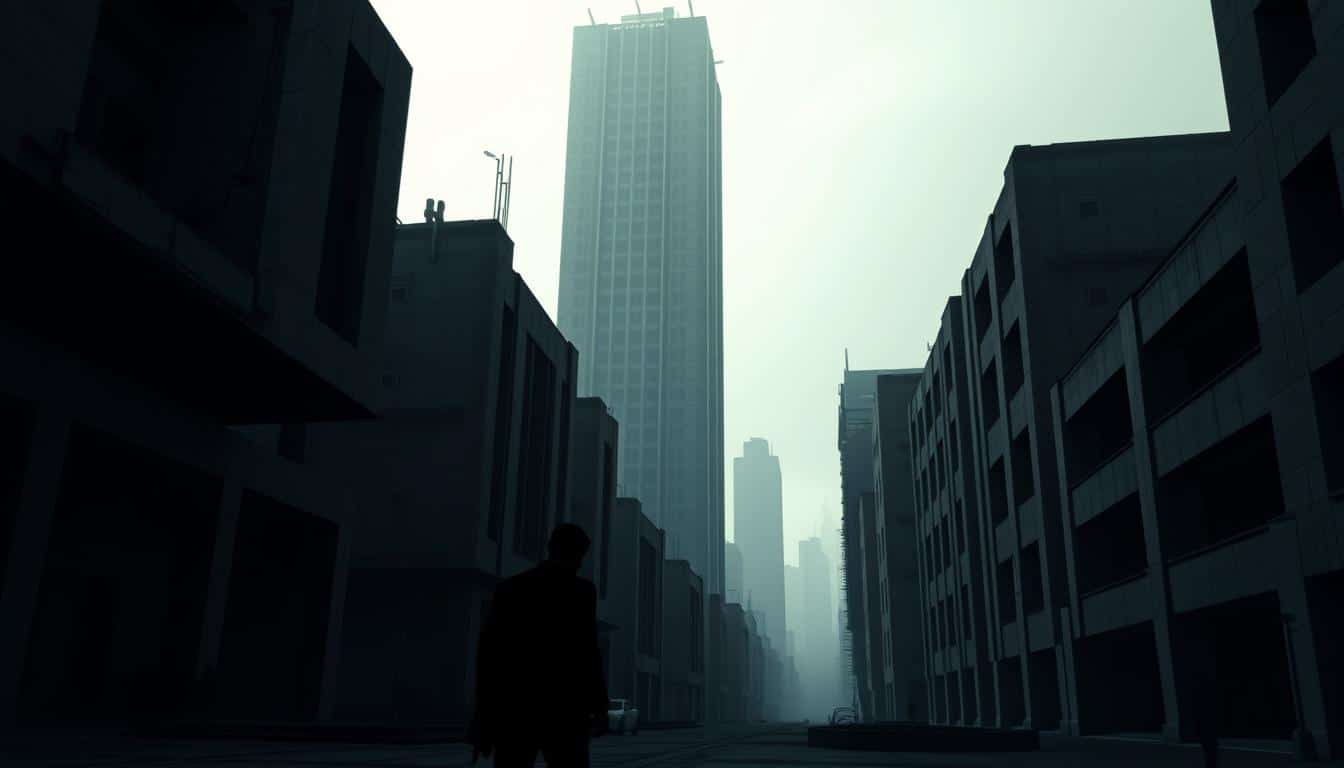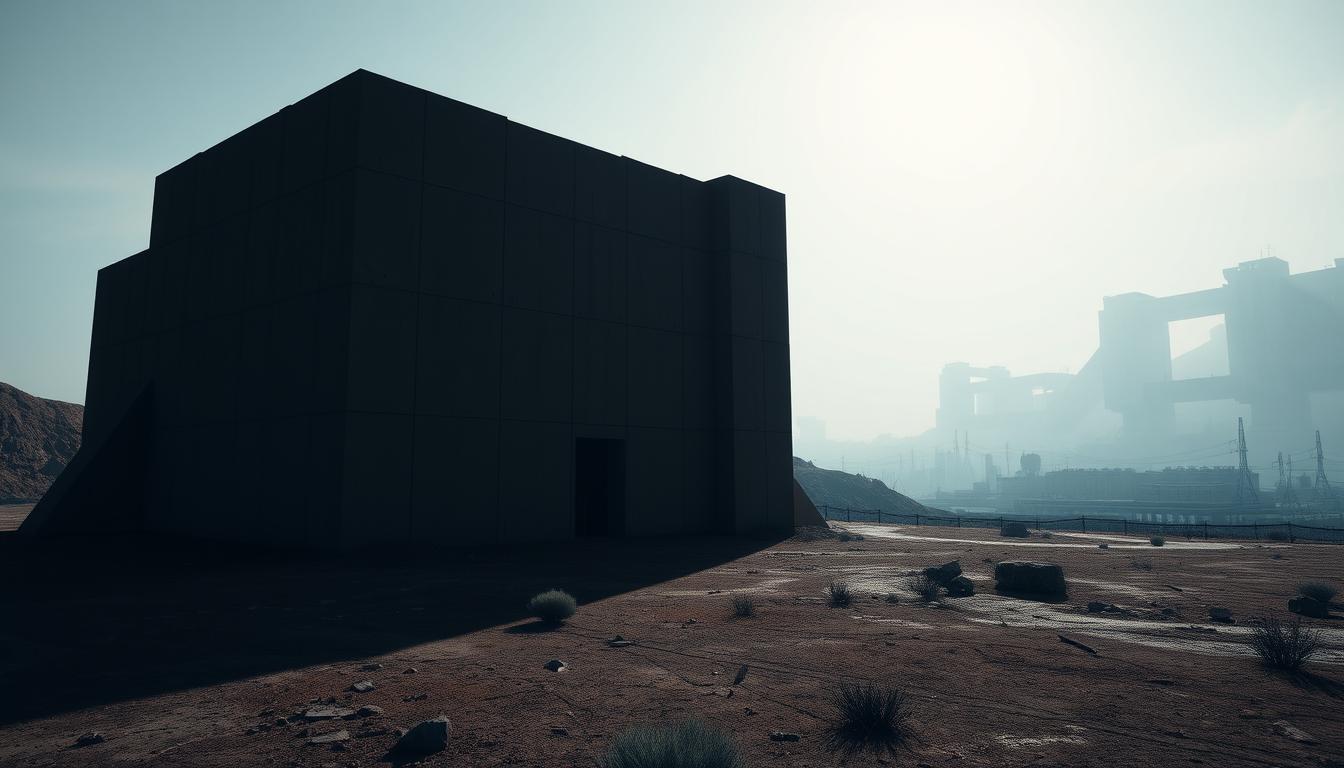Soviet Brutalist architecture is a striking symbol of a unique design era. It’s known for its bare, functional look. Nowadays, these buildings are featuring more in video games. They help make game worlds engaging and memorable. We’ll look at how these architectural styles are used in games. This will show the interesting blend of architectural history and digital worlds. Let’s discover how this style of building has influenced gaming.
The Essence of Soviet Brutalist Architecture
Soviet Brutalist architecture reflects a major shift in design. After World War II, this style arose as a rejection of earlier, ornate designs. Brutalism stands out for its bold shapes and raw concrete, showing off a strong, enduring look. This movement valued practicality, focusing on function over just looking good.
Brutalism’s bare look often stirs strong feelings, tied to the era’s collective beliefs. Soviet designers aimed to reflect state values, choosing strength and function over frills. These buildings aren’t just eye-catching; they’re incredibly useful, serving a society in flux well.
Diving into Soviet Brutalist architecture reveals more than its visual impact. The bare elegance of these concrete giants speaks to ambition and pragmatism. They draw us into the past, urging us to think about how architecture can share social stories.

Historical Context of Brutalism in the Soviet Union
Brutalism in the Soviet Union started in the mid-20th century. It was a way to fix cities after World War II. The country needed to rebuild quickly. They chose to use concrete, making it an important part of architecture.
This style was driven by the need to restore normal life and show strength. The buildings met the need for homes. They also showed the nation’s will to overcome challenges, using architecture to tell their story.
As towns were rebuilt, these buildings aimed to support a sense of togetherness and fairness. Brutalism marked Soviet cities’ look, mixing architecture with the story of rebuilding after the 1940s.
Defining Characteristics of Soviet Brutalism
Soviet Brutalism stands out with a few key features that make it unique. The use of raw concrete is crucial. It gives buildings a rough look, focusing on texture. This makes the structures look very strong and lasting.
The style also includes a modular design. It means using big, repeating shapes that make the buildings look even larger. This way of building is efficient. It also shows a focus on being useful and practical.
Buildings like the Palace of Culture and Science in Warsaw are great examples of Soviet Brutalism. They have large fronts that show off their strength. The simple design shows its artistic value and how it fits in the city. This focus on strong, simple looks makes Soviet Brutalism important in architecture history.
Influence of Soviet Brutalist Architecture in Video Games
Soviet Brutalist architecture influences video game design greatly. It shapes how developers make immersive environments. The stark lines and huge scale of these buildings inspire game designers. They build spaces that mimic Brutalism’s imposing feel in games.
This architectural style enhances player engagement through unique spatial narratives. It deepens emotional responses. Designers use the bold forms and raw materials of Brutalism to create atmospheric settings. These settings encourage players to explore.
Games become stages where environments act as characters. Each space tells its own story with its design. This blend of architecture and design sparks innovation in storytelling. Interactions in these spaces can make players feel alone or in awe. This reflects the deep emotions tied to Brutalist architecture.
Soviet Brutalist Architecture Video Games
Soviet Brutalist video games have opened new worlds for players. Their unique visual styles and captivating stories stand out. These games draw from the iconic, stark look of Soviet Brutalism. A few games are especially good at showing off this design and making it a big part of the play.
Notable Examples of Games Featuring Soviet Brutalism
Some games masterfully mix Soviet Brutalist styles into their worlds. This enhances the gaming experience. Here are a few noteworthy ones:
- Control: Set in the enigmatic Oldest House, it lets players explore stunning Brutalist architecture and uncover its mysteries.
- NaissanceE: Players delve into vast, abstract spaces that show off Brutalism’s geometric shapes and simplicity.
Artistic Inspirations Behind Game Design
The art influences behind these games blend abstract expressionism and surrealism. Game designers translate the emotional power of Soviet architecture into their creations. This makes the games more engaging. They use architectural styles to make visually powerful, deep games. This connects art with interactive entertainment.
How Level Design Utilizes Brutalist Aesthetics
Level design is key in gaming, especially with Brutalist aesthetics. This style focuses on raw materials and simple builds. It helps make game spaces feel big and real.
Brutalist architecture makes gameplay feel more real and touching. It challenges players while also making them feel something through its simple beauty. Designers use the environment to tell deep stories.
Key parts of level design with Brutalist looks include:
- Monolithic Structures: Big, solid buildings make the game world feel more real.
- Geometric Shapes: Sharp lines and angles make games feel more exciting.
- Raw Materials: Using concrete and steel makes the game look more lifelike and tells a story.
These design choices make the game world more interesting for players. They get really into exploring the game’s buildings and style. This mix of gameplay and design makes them dive deep into the game’s world.
Exploring the Emotional Impact of Brutalist Spaces
Brutalist architecture makes us feel strong things when we see it in games. It can make places feel intimidating or really amazing. When players move through these big, raw buildings, they feel more connected to the game.
In games with Brutalist designs, the huge size and style of buildings really pull players in. These spaces can make you feel small or super powerful. The mix of sharp shapes and simple materials makes these places interesting, yet a bit strange.
Games with Brutalist architecture make players think about their own feelings. This style of building adds so much to the fun of playing. As you play, the game’s world becomes more real, making every choice feel important.
Brutalism and its Relationship with Liminal Spaces in Games
Brutalist architecture focuses on liminal spaces, areas of change. In games, these spaces deepen player immersion. Players move through areas that blur the lines between the known and the unknown.
Liminal spaces in games are ambiguous and can feel unsettling, much like Brutalism. You’ll see vast corridors, stark concrete, and unusual layouts. These elements build tension. They push players to explore, combining physical and emotional connection to the game.
Liminal spaces and Brutalism work together to enhance gameplay. They pull players into unique environments. This sets the stage for evolving stories and deeper emotional ties. It highlights the beauty of Brutalist architecture.
This evolving connection between players and game spaces is fascinating. As players dive in, they’re not just passing by. They become part of a story influenced by Brutalist design.
Iconic Games That Showcase Brutalist Architecture
Video games offer a unique way to explore Brutalist architecture. The Control game and NaissanceE game stand out for this. They dive into architectural ideas in ways that draw players in. This makes the gameplay memorable and deep.
Control: The Oldest House
The Control game is set in the Oldest House, showcasing architectural design. It’s more than just a setting; it influences the story and how players interact with the game. The building changes, making players rethink space and time. This adds layers to the story, making it richer for players.
NaissanceE: A Journey through Brutalist Environments
The NaissanceE game, however, takes players to surreal places inspired by Brutalism. It creates an eerie mood as players move through big, daunting spaces. The game makes you think about your place in these buildings. It connects players emotionally to their environment, highlighting Brutalism’s mix of beauty and unease.
Design Challenges & Opportunities for Developers
Bringing Soviet Brutalist architecture into video games is both tough and exciting for developers. They must keep the unique look but also make the game fun to play.
Some challenges include:
- Making detailed environments that don’t confuse players.
- Adding useful parts to Brutalism’s simple style.
- Keeping the game interesting in simple, minimal spaces.
Yet, these challenges lead to creative chances:
- Using Brutalist mood to tell better stories.
- Finding new gameplay ideas in the architecture’s layout.
- Making puzzles that fit naturally into the building’s design.
The stark beauty of Brutalism offers a great chance for game creation. Developers can weave these styles into gameplay. This gives players an experience they won’t forget.
Conclusion
Soviet Brutalist architecture adds a special touch to video games. It mixes history with the thrill of playing. This style brings depth to the game worlds, making journeys unforgettable. The large, raw structures pull players into a world that’s both strange and fascinating.
This mix of old architecture and gaming sparks new ideas. Game makers see the chance to explore new stories and emotional worlds. Using the stark beauty of Brutalist buildings, they can create memorable game scenes. This opens paths for stories as bold as the buildings themselves.
Bringing Soviet Brutalist architecture into games does more than make them fun. It points to a future where buildings influence how we play and experience stories. As gamers explore these concrete mazes, they connect with history. This reminds us how design deeply affects a game’s mood and story.



